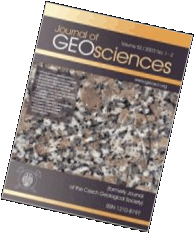 Export to Mendeley
Export to MendeleyOriginal paper
Cassiterite in granite, granitic pegmatites, greisen and hydrothermal veins, the Bugarura-Kuluti Nb-Ta-Sn deposit, Karagwe-Ankole Belt, Rwanda: petrography and chemical composition
Journal of Geosciences, volume 69 (2024), issue 3, 129 - 150
DOI: http://doi.org/10.3190/jgeosci.389
This study provides detailed mineralogical, textural and compositional features of cassiterite from the Bugarura-Kuluti Nb-Ta-Sn deposit located in the Mezoproterozoic Karagwe-Ankole Belt of eastern Rwanda. The cassiterite occurs within two-mica, peraluminous “tin” granites, lithium-caesium-tantalum (LCT) pegmatites, greisens, and hydrothermal quartz-muscovite veins. The cassiterite from quartz-muscovite veins exhibit progressive oscillatory zonation and contains rutile and ilmenite inclusions. The chemical signature of the vein cassiterite is marked by elevated Ti and low Ta, Nb and Fe concentrations. The cassiterite from the pegmatites and associated greisens contains numerous Ta-Nb oxide inclusions. Both types expose complex and patchy textures, often associated with younger generations of cassiterite. Contrary to cassiterite from quartz-muscovite veins, the pegmatitic/greisen cassiterite has elevated Ta, Nb and Fe and low Ti contents. The cassiterite from the granite is anhedral, exhibits irregular patchy textures, and lacks zonation. Mineral inclusions in the two-mica granite cassiterite were not observed. In comparison to cassiterite from veins, greisens and pegmatites, granitic cassiterite is characterised by chemical compositions showing intermediate concentrations of minor and trace elements. The origin of Sn mineralisation involves segregation of rare lithophile elements into residual pegmatite melts and hydrothermal fluids and their crystallization in Sn and Nb-Ta minerals in LCT pegmatites and quartz veins. The majority of the cassiterite in pegmatites precipitated during the process of greisenisation by circulating aqueous solutions, probably exsolved from pegmatite melts. Most of hydrothermal fluids, enriched with volatiles and Sn, used tectonic fractures to escape farther to adjacent metasedimentary rocks allowing for the generation of quartz-muscovite veins by interaction with country rocks and/or mixing with meteoric waters.
Webdesign inspired by aTeo. Hosted at the server of the Institute of Petrology and Structural Geology, Charles University, Prague.
ISSN: 1803-1943 (online), 1802-6222 (print)
email: jgeosci(at)jgeosci.org


IF (WoS, 2024): 1.3
5 YEAR IF (WoS, 2024): 1.4
Policy: Open Access
ISSN: 1802-6222
E-ISSN: 1803-1943